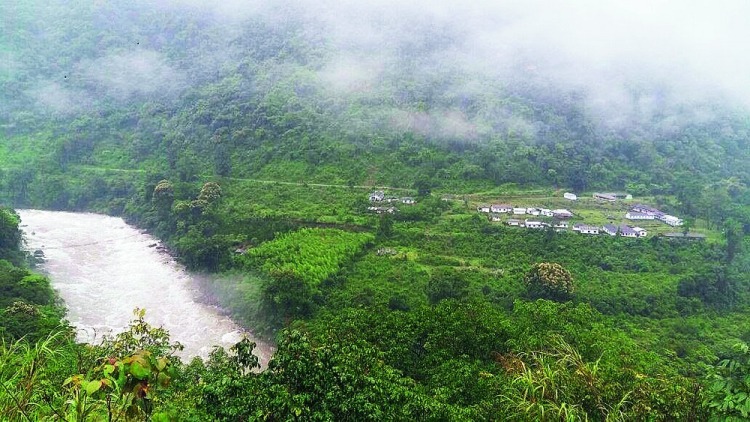Arunachal Pradesh's Hydro-Electric Project Poses A Major Threat To The Environment

Breath-taking mountains covered with dense forest, deep gorges, waterfalls flowing into emerald lakes and innumerable meandering rivers and turbulent streams. Least to say this is just a slice of the stunning Dibang valley in Arunachal Pradesh is a biodiversity hotspot with scientists still describing new species from the area.
The clearance to Etalin Hydro-Electric Project in one of the most biodiverse Himalayan zones in Arunachal Pradesh’s Dibang Valley has various concerns.
The move, however, may not go down well with environmentalists who feel that the Etalin project may spell disaster for local ecology. The project will involve diversion of 1150.08 ha of forest land and felling off 2.7 lakh trees. Dibang Valley forms part of Global Biodiversity Hotspot , one of the 36 such global biodiversity areas across the world. It is also an important habitat for Schedule-I endangered species including tigers and Species of mammals and 300+ species of birds. Global scientific reports have already established how we are in the middle of the sixth mass extinction of species with populations crashing over 60% in the last four decades. And projects like these only tend to speed up the destruction of biodiversity which is critical to our own survival. Also, these forests are extremely crucial to fight against the climate crisis. It envisages construction of two dams—a 101.5 metre high dam on the Dir river near Yuron village and a 80-metre high dam on Tangon river.The total land requirement for the project is 1,155.11 hectares. A total of 18 villages consisting of 285 families are expected to be affected by the proposed project. At the same time, The Wildlife Institute of India concluded that the project would not affect tigers since none was camera-trapped in the project area during the four-month fieldwork. Advising that “the project may be allowed,” the Forest Advisory Committee noted last month: “The wildlife study done by WII is accepted in toto… along with all the recommendations with condition that the UA (user agency) funds the Conservation Plan.” Several aspects of the WII’s engagement in the clearance process of the Etalin hydel project raise questions of propriety and conflict of interest. In February 2017, the FAC sought a “multiple seasonal replicate” study to assess the abundance of wildlife at the proposed project site. The WII limited the study to four months of fieldwork and expanded its scope to charting a conservation plan for mitigating the project’s impact. The FAC has considered the project four times since 2015. The project will have a huge impact on the natural habitat, endangered species as well as on the lives of local people
The move, however, may not go down well with environmentalists who feel that the Etalin project may spell disaster for local ecology. The project will involve diversion of 1150.08 ha of forest land and felling off 2.7 lakh trees. Dibang Valley forms part of Global Biodiversity Hotspot , one of the 36 such global biodiversity areas across the world. It is also an important habitat for Schedule-I endangered species including tigers and Species of mammals and 300+ species of birds. Global scientific reports have already established how we are in the middle of the sixth mass extinction of species with populations crashing over 60% in the last four decades. And projects like these only tend to speed up the destruction of biodiversity which is critical to our own survival. Also, these forests are extremely crucial to fight against the climate crisis. It envisages construction of two dams—a 101.5 metre high dam on the Dir river near Yuron village and a 80-metre high dam on Tangon river.The total land requirement for the project is 1,155.11 hectares. A total of 18 villages consisting of 285 families are expected to be affected by the proposed project. At the same time, The Wildlife Institute of India concluded that the project would not affect tigers since none was camera-trapped in the project area during the four-month fieldwork. Advising that “the project may be allowed,” the Forest Advisory Committee noted last month: “The wildlife study done by WII is accepted in toto… along with all the recommendations with condition that the UA (user agency) funds the Conservation Plan.” Several aspects of the WII’s engagement in the clearance process of the Etalin hydel project raise questions of propriety and conflict of interest. In February 2017, the FAC sought a “multiple seasonal replicate” study to assess the abundance of wildlife at the proposed project site. The WII limited the study to four months of fieldwork and expanded its scope to charting a conservation plan for mitigating the project’s impact. The FAC has considered the project four times since 2015. The project will have a huge impact on the natural habitat, endangered species as well as on the lives of local people
Latest Videos
















